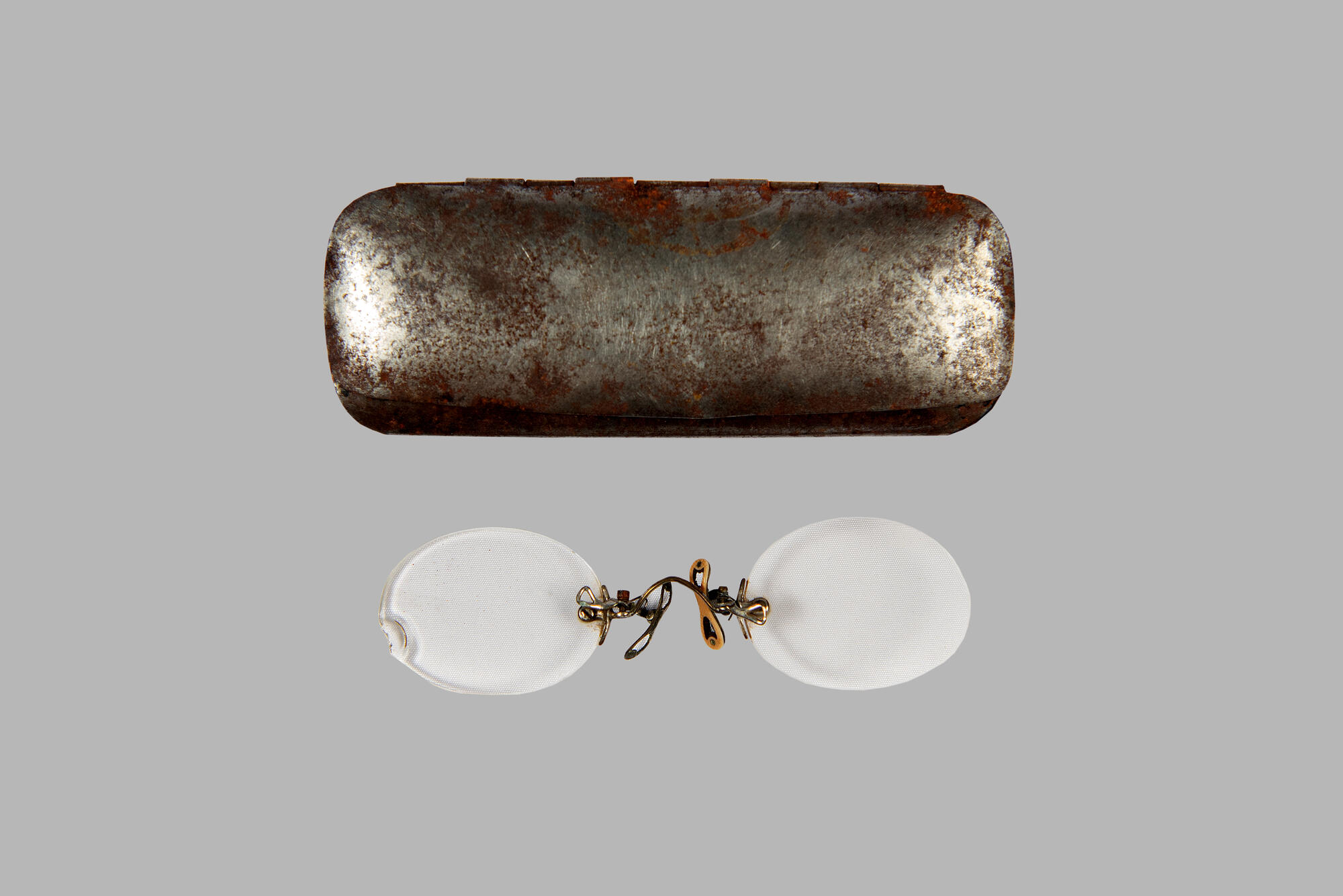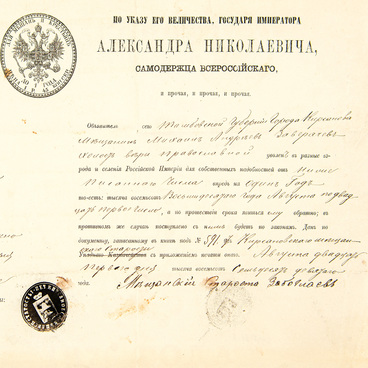The memoirs of Anastasia Tsvetaeva (Marina Tsvetaeva’s junior sister) contain descriptions of the glasses worn in this family: “My father wore narrow gold glasses and my grandfather — those with tortoiseshell frames.” Round lenses were common as well as oval. Glasses were kept in cases of oval oreliptical shape. Cases were made of papier-mache, cardboard and thick leather. Expensive cases were covered with morocco.”
The pince-nez became a very fashionable accessory and an article of daily use, although it first appeared in the 16th century. Pince-nez (from the French pince-nez, from pincer “to pinch” and nez “nose”) are eyewear without earpieces, held on the nose by a spring that clamps the bridge of the nose. Originally the pince-nez were round to be followed in 1841 by oval pince-nez ones. The popularity of this optical device is evidenced by museum exhibits preserved in various museums in Russia and around the world.
The Kirsanov Local History Museum has preserved several pairs of eyewear belonging to the Boratynsky family. According to the recollections of Mikhail Andreevich Boratynsky, his father-in-law, Alexey Mikhailovich Zhemchuzhnikov (one of the authors of Kozma Prutkov’s works) was short-sighted in his youth and wore pince-nez. But later, according to Mikhail Andreevich, he read without glasses until his old age. However, the Kirsanov Local History Museum keeps a photo of Aleksey Mikhailovich Zhemchuzhnikov advanced in age and wisdom, where he is captured wearing a pince-nez.



